COPYRIGHT, PLEASE NOTE
All the material on this website is copyrighted to J-P Metsavainio, if not otherwise stated. Any content on this website may not be reproduced without the author’s permission.
BUY A MUSEUM QUALITY POSTER
BUY A POSTER:https://astroanarchy.zenfolio.com/
Thursday, January 15, 2009
Sh2-240, a Supernova remnant. (Simeis 147)
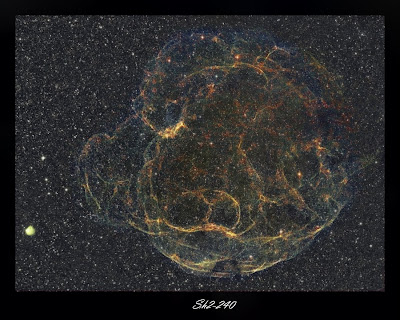
I have never seen this object in HST narrowband colors.
After strucling with this last night, I don't wonder why.
This is a extremely difficult objekt it has a super low surface brightness and
it's huge!
This is a supernova remant in Taurus & Auriga
it has the angular diameter of 200'x180'.
Thats about 8 full Moon!
-
There was very litle data on O-III channel.
With extreme stretching and by using the method I have developed for narrowband work, some O-III glow can be clearly be seen deep down in data.
-
Total exposure time was relatively short doe the very fasr f1.8 optics.
-
Exposures:
-H-alpha 12x600s binned 1x1+ 24x300s binned 2x2, total 4h
-S-II 5x600s binned 2x2
-O-III 14x300s binned 3x3
Optics:
Canon 200mm EF f1.8 @ f1.8
Camera:
QHY9 @ -50 C
Guiding:
Lx200 GPS 12" + LQHY5 and PHD-Guiding
-
The information in O-III channel is extremely weak.
I used a special technique of mine to dig it out for color information.
This image serie shows how weak the O-III realy is.
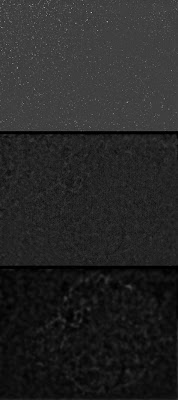
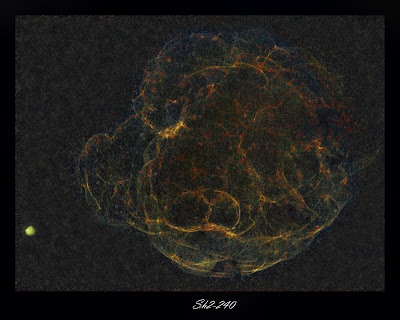
Here is a Starless version to better show the nebulosity.
-
I keep coming back to this fascinating object, there is something mysterious
about its appearance and the fact, that it's difficult to shoot makes it even more interesting.
-
Here is some elaier tryouts with Sh2-240:
Thursday, January 8, 2009
QHY9 & Canon EF 200mm f1.8 "Startest"
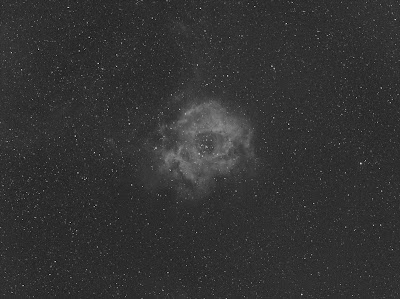
NOTE,
The JPG image is large, 2,7mb.
(You have to load the image from Picassa to see it in Full Resolution.)
-
NOTE2,
The image looks litle soft. It's not doe the optics or focus but
very low altitude of the object up here North.
The maximum elevation was 29 degrees when Rosette was imaged.
-
-
Here is a single five minute exposure about Rosette Nebula.
Stars are pinpoint from edge to edge. I haven't test the Chromatic aberration
yet, since I'm shooting narrowband at the moment.
There should be very litle of it doe the exotic class in the lens system.
You can read more about it from here:
-
On the lower left corner stars are somehow stretched, thats not an optical flaw.
That happends when the camera is no absolute perpendicular to the lens.
The critical focus zone is only 7/1000mm and even slightest tilt can be seen in the image.
I'll correct thet later by rotating the camera in M42 0.75mm thread to an
other position.
-
This is a single calibrated 5min. image.
Flat, Bias and One Dark frame for bad pixels is used.
Image is then stretched and converted to 8bit doe the JPG algorithm.
No other image processing is done.
-
DETAILS:
Optics, Canon EF 200mm f1.8L @ f1.8
Camera, QHY9 astro camera
Guiding, QHY5 and PHD-Guiding on LX200 GPS 12"
Exposure, 1x300s
Filter, Baader 7nm H-alpha
Labels:
research and development
Firs light for QHY9 and 200mm f1.8 lens
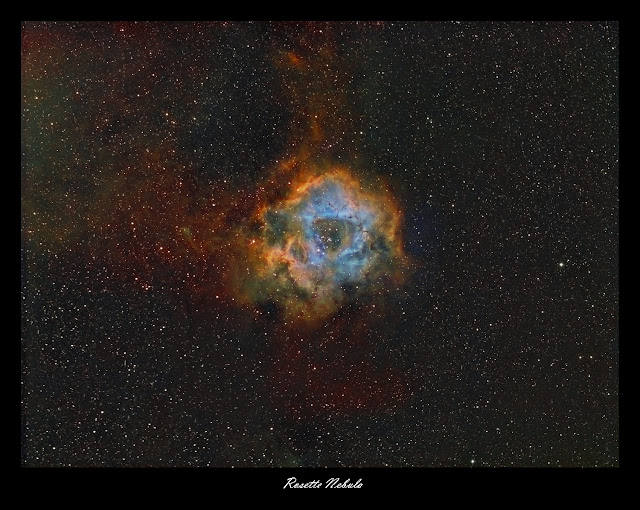
Ha 12 x 5min = 1h, O-III 3x5min and S-II 3x5min
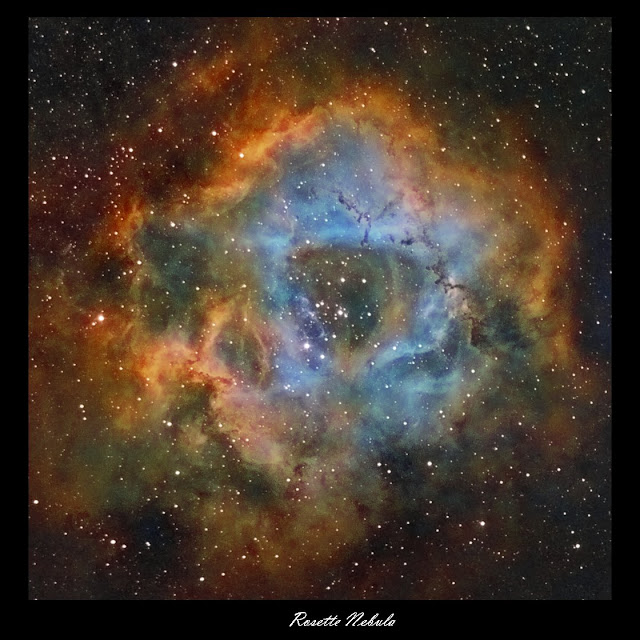
-
- 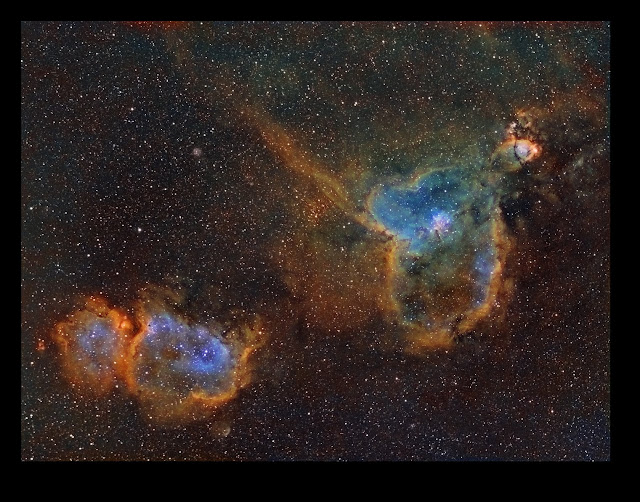 HEART & SOUL H-alpha 12 x 5min. = 1h, O-III 3 x 5min and S-II 3x5min.
HEART & SOUL H-alpha 12 x 5min. = 1h, O-III 3 x 5min and S-II 3x5min. 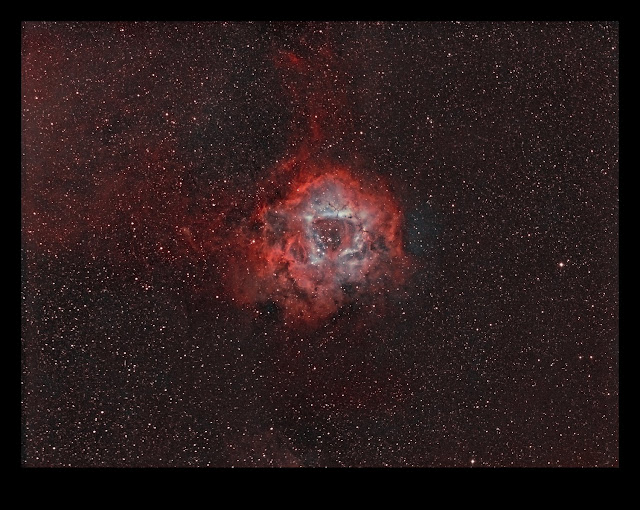 Rosette in "natural color"
Rosette in "natural color"
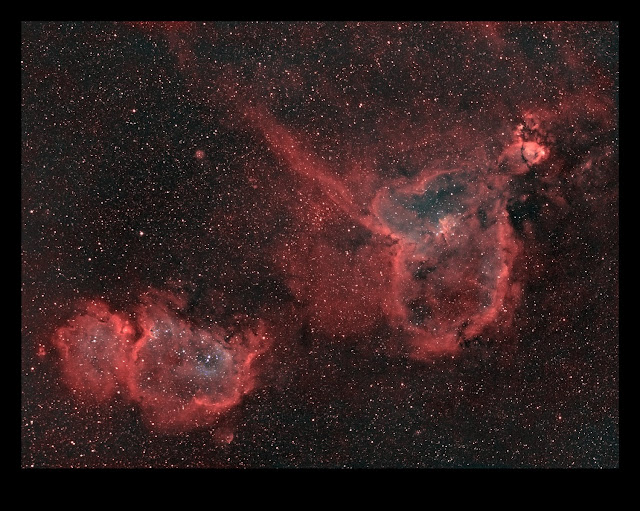 H & S in natural color
H & S in natural color
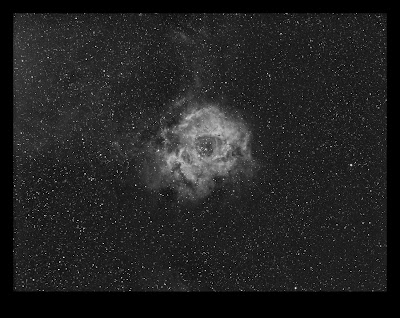 1h. 7nm H-alpha channel
1h. 7nm H-alpha channel
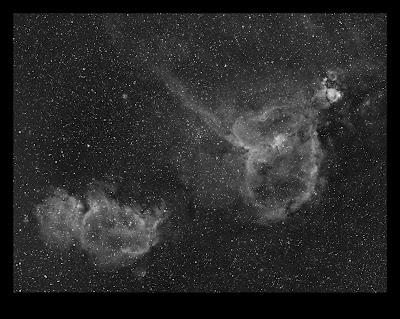 1h 7nm H-alpha channe
1h 7nm H-alpha channe
 HEART & SOUL H-alpha 12 x 5min. = 1h, O-III 3 x 5min and S-II 3x5min.
HEART & SOUL H-alpha 12 x 5min. = 1h, O-III 3 x 5min and S-II 3x5min.  Rosette in "natural color"
Rosette in "natural color"  H & S in natural color
H & S in natural color  1h. 7nm H-alpha channel
1h. 7nm H-alpha channel  1h 7nm H-alpha channe
1h 7nm H-alpha channe
After so many technical difficulties I managed to shot
first lights for QHY9 astro camera.
Everything worked smoothly with new ASCOM driver, MaximDL
and FocusMax.
This is real firs light for my new lens, Canon EF 200mm f1.8´, as well.
-
It was really an experience to shot with f1.8 optics.
Extreme fast optical conficuration and difraction limited lenses makes this lens
to a dream machine for astro imaging.
Pay attention to exposuretimes of the first light images.
-
Focusing at f1.8 is least difficult. The critical focus zone is only 7 microns =
7/1000mm!
I am using the TCF-s focuser and there is a temperature compensation build in.
I noticed, that about a half degree temperature drop is enough
to make focus soft. Without temp. compensation this lens must be focused
after every image.
Actual focusin is done by rotating the focusing ring of the lens by TCF-s focuser.
There is images about this system in R&D part of the pages.
-
With this lens and camera combo I can have both, wide field and high resolution.
Wednesday, January 7, 2009
A New Observatory!
After shooting from very bad location many years I finally have had
a new location for my observatory.
It stil located in very center of the Town and light pollution is a huge problem.
the good thing is, that new place has a good warm room next to the roof dec.
The dec is very well protected from the wind and I have 360 degree free view above 25 degree.
There will be a protective building around the telescope in near future.
-
I build a permanent pear for the telescope. It makes a huge difference to my polar alignment
and vibrations. Since I'm using my telescope for photographing only, I made the pier
only 60 cm high. It's very heavy doe the 20mm steal and the actual pier diameter is 200mm.
Here is some images from the new location.
 Telescope on the new pier
Telescope on the new pier
 Canon 200mm f1.8 monster lens on the telescope.
Canon 200mm f1.8 monster lens on the telescope.
 The pier before painting and bolting down.
Leveling is done by the four bolt in the concrete.
The pier before painting and bolting down.
Leveling is done by the four bolt in the concrete.
Labels:
equipments
Subscribe to:
Comments (Atom)








